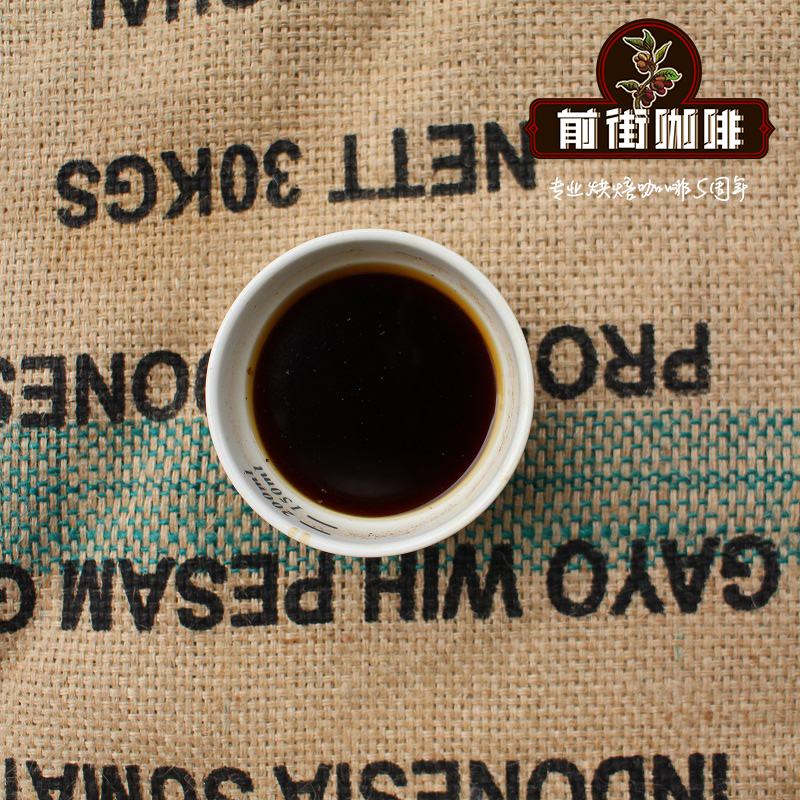What's the quality of Robusta coffee? is Robusta boutique coffee?

Is Arabica the only coffee that can be considered good? Is Robusta always synonymous with poor quality?
Robusta coffee accounts for about 40% of global coffee production. It grows faster than Arabica and is more tolerant to extreme weather conditions, but often does not receive the same attention and attention during production and processing.
Robusta coffee is widely praised for its poor flavor and is therefore widely rejected by specialty coffee lovers. But can you make delicious coffee if it is grown and processed in a quality-conscious way? Let's learn more about Robusta.
Robusta vs Arabica
Let's be clear: Arabica coffee is more complex than Robusta coffee in terms of flavor and aroma. Part of the reason is that the two species are chemically different.
In Espresso: The Science of Quality, Andrea Illy and Rinantonio Viani note that "Arabica coffee has lower caffeine, amino acids and chlorogenic acid content, but 60% more total oil than Robusta coffee." Chlorogenic acid contributes to astringency, so reduced amounts in Arabica contribute to its final cup quality. It is well known that many aromatic volatile compounds are dissolved (trapped) in oil droplets and released during brewing, so oil content could explain some of the differences in cup quality between Arabica and Robusta coffee, especially in espresso coffee."
Robusta has been criticized for having a rubbery and bitter taste, possibly related to high caffeine content. Professional bakers and winemakers have largely eliminated it. It is usually used in the low-end market and is usually used for mixing.
The quality of coffee depends not only on the chemical properties of the beans, but also on a range of human choices. The delicious Arabica coffee we drink today is not only a gift from nature, but also the result of centuries of selection that emphasize quality-related factors. We then make choices about production, processing, roasting and brewing, each of which further affects the sensory quality of the coffee.
Overwhelmingly, Arabica coffee invests more time and resources than Robusta throughout the supply chain, which has a big impact on the final cup.
The Coffee Quality Institute (CQI) statement said,"Robusta is often overlooked because of its traditionally unfavorable cupping quality, which tracks directly into the way it's handled." Robusta beans are often traded with hundreds of flaws, and cupping quality is not a priority. But what if it's handled properly? The impact can be enormous not only for the farmers who produce it, but for everyone in the supply chain."
Suffice it to say that if Robusta received the same care and attention as Arabica crops, this could result in higher cupping scores and more respect for the species. But if we don't have a market demand for quality Robusta, then farmers have no incentive to improve quality at the farm level.
A number of organizations are trying to change perceptions about Robusta and develop a market for quality Robusta. CQI established the Q Robusta program in 2010, setting a common quality language for Fine Robusta. This year, it released its "Fine Robusta Standards and Protocols" on Coffee World.
Speaking on Coffee Podcast, CQI Technical Director Dr. Mario Fernandez said: "[Robusta] has certain characteristics that make it more attractive to certain growers, roasters and consumers than Arabica coffee. Many people in the specialty coffee industry fail to understand that comparing Arabica coffee and Robusta coffee in terms of quality is wrong…they are two species of the same genus, such as donkeys and horses. Donkeys and horses are precious resources to man, but they each have different occupations and serve different purposes…There is land for Arabica and land for Robusta."
As the coffee industry sees more climate change impacts, the importance of growing the right crops for the right land conditions is likely to become more apparent. As demand grows and more land becomes unsuitable for growing Arabica coffee, the industry needs to find alternative products. "Without significant efforts to adapt coffee production to climate change, global production by 2050 could be even lower than today," the Coffee Barometer 2018 notes.
Franziska Bringe is purchasing manager for GEPA, a German coffee importer working with Ugandan Robusta producers. She told me about some of the benefits of growing up Robusta.
"As common nonscientific names have already said, Robusta is more robust than Arabica," she said. "It's easier to grow and cheaper. Producers can grow it at lower altitudes than Arabica, and it is less susceptible to pests and diseases due to its higher caffeine content (it is a natural pesticide).
"Robusta is also more resistant to unstable weather conditions and warmer temperatures, which is controversial during periods of climate change and the fact that Arabica has been reduced in acreage. Robustas cherries also grow much faster than Arabica trees, which take several years to mature and produce higher crop yields per tree. The downside, of course, is that it costs less than Arabica coffee."
But low prices are another strong argument in favor of premium Robusta coffee and its place in the specialty coffee industry. Millions of farmers around the world already grow Robusta coffee, and these improvements in coffee quality are likely to lead to higher prices and higher incomes for producers.
As many of its members claim, if the specialty coffee industry's mission is to put producers first, investing in Robusta to improve its quality and boost its reputation should be a priority for an ethically-oriented industry.
Important Notice :
前街咖啡 FrontStreet Coffee has moved to new addredd:
FrontStreet Coffee Address: 315,Donghua East Road,GuangZhou
Tel:020 38364473
- Prev

Innovation in Colombia Coffee Plantations: From Green Bean Processing to Diversity
We have been producing and consuming coffee for more than 600 years, but many of our methods are the same as those of centuries ago. High-quality coffee can still be hand-picked and dried in the sun on wooden boards and wire tables. Despite innovations in production and processing, such as experimental fermentation and honey coffee, many farmers are unable to produce coffee due to lack of resources, training or funding constraints.
- Next

What is the use of coffee cooperatives? why do some small producing areas have cooperative flavor units?
Around the world, you will find that cooperatives are producing, processing and selling coffee. But what is a coffee cooperative? How does it work? How do farmers have a traceable single origin when they cooperate? To find out the answers to these questions and more information, I interviewed JosMarcos RafaelMagalhes, president of the Minasul Cooperative, and some of his agricultural members. Minasul
Related
- Detailed explanation of Jadeite planting Land in Panamanian Jadeite Manor introduction to the grading system of Jadeite competitive bidding, Red bid, Green bid and Rose Summer
- Story of Coffee planting in Brenka region of Costa Rica Stonehenge Manor anaerobic heavy honey treatment of flavor mouth
- What's on the barrel of Blue Mountain Coffee beans?
- Can American coffee also pull flowers? How to use hot American style to pull out a good-looking pattern?
- Can you make a cold extract with coffee beans? What is the right proportion for cold-extracted coffee formula?
- Indonesian PWN Gold Mandrine Coffee Origin Features Flavor How to Chong? Mandolin coffee is American.
- A brief introduction to the flavor characteristics of Brazilian yellow bourbon coffee beans
- What is the effect of different water quality on the flavor of cold-extracted coffee? What kind of water is best for brewing coffee?
- Why do you think of Rose Summer whenever you mention Panamanian coffee?
- Introduction to the characteristics of authentic blue mountain coffee bean producing areas? What is the CIB Coffee Authority in Jamaica?

